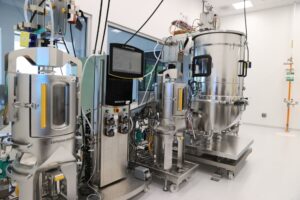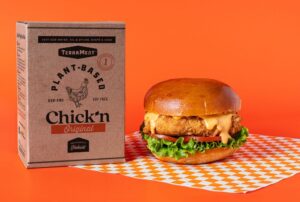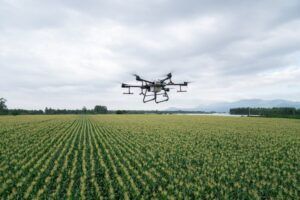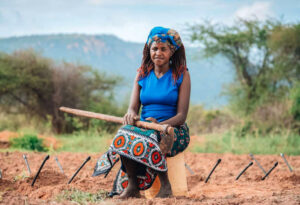Cover crops are a big deal these days as farmers see benefits for soil health and cash crop yields. This has created a booming market for cover crop varieties that are well-suited to different geographies or climates, or that can pinpoint specific problems with the soil. St Louis-based CoverCress is one of several startups trying to up the ante by offering cover crops that can double up as cash crops, giving farmers the best of both worlds.
It has developed a winter “cash cover crop” variety from pennycress using plant breeding and genome editing techniques. It’s planted during the winter months when fields are typically inactive and has a short growing season to get it out of the ground before traditional cash crops need to be sown.
While cover crops are typically stripped from the field or tilled into the soil, CoverCress can be harvested and turned into a variety of products — including oil and a feed-grade meal marketed to livestock producers — that bring growers an additional revenue stream.
“2021 is a really big year for us,” chief operating officer Mike DeCamp tells AFN.
“We’ve had our own internal harvests of all of our research plots over the eight years we’ve been developing the crop. We have our largest plot yet, 100 acres, in the ground.”
CoverCress recently announced an $8 million “Series B1” funding led by Bunge Ventures, the VC arm of US agribusiness firm Bunge. REG Ventures, a subsidiary of US biodiesel producer Renewable Energy Group (REG), also participated in the round.
“Several years of relationship building with Bunge and REG led to a unique situation last fall when [they] called us and indicated they had an interest in investing. So, while we weren’t actively looking, this was a great opportunity from a strategic standpoint,” DeCamp says.
The startup now has enough capital to defer further fundraising as it moves through its commercialization timeline, he adds.
“Combined with an extended commitment of funding from other partners, including Leaps by Bayer, this new round of funding gives the company buy-in from the entire supply chain,” DeCamp says.
Before it was acquired by Bayer, Monsanto was one of CoverCress’ first investors. According to DeCamp, it had mainly been attracted by the startup’s germplasm seed development.
But in order for the crop to work as an oilseed, CoverCress needed partners in the value chain to help it crush the seed and extract the oil and the protein meal – as well as partners that could handle the off-take of both products.
“Between Bayer, Bunge, and ERG, we are covered upstream at the genetic standpoint, midstream at the crush standpoint, and downstream at the actual production of the renewable fuel standpoint,” DeCamp says.
The road to commercialization
With all of its supply chain ducks in a row, CoverCress is going full speed towards commercializing its cash cover crop. The “Series B1” financing follows a $5 million follow-on equity round in April 2020 that was intended to help the startup gear up for its first harvest.
It’s now targeting commercial production by fall 2022, with the aim of 50,000 acres planted next year and 250,000 acres in 2023. Most of its growing locations are in Illinois with additional sites in Missouri and Iowa.
“[Last] fall was very dry so we were a little worried. Our stands were a little smaller going into the fall, but they’ve really taken off and we’ve seen excellent stands in the spring,” DeCamp says.
“We feel confident [that we will] have the inventory we need to move forward with our soft launch in 2021.”
By 2023, CoverCress anticipates having enough acres of CoverCress planted to appeal to the crush market. The startup is optimistic about its appeal to downstream buyers of the oil and residual meal thanks to the buzz around regenerative ag practices and capturing carbon in the soil.
“There’s a lot of wind at our back if you think about the phenomenal position farmers are in to support all of that. The sense we have of the renewable fuel system is that demand is really high right now,” DeCamp says.
“We are getting more inbound calls than we ever have in the past from airlines and other fuel producers that run large truck stop systems in the US who want to lower their carbon footprint.”
The new White House administration and its focus on carbon reduction has given CoverCress an additional boost, DeCamp adds.
Looking further into the future, CoverCress is exploring opportunities to get its crop in the hands of alt-protein manufacturers, he says.
“There are some interesting characteristics of our protein that could fit well into the plant proteins race. There is a lot of demand in the marketplace right now for proteins to fit what is needed to create [a plant-based] burger, which is exciting and interesting for us.”

















Sponsored
Farmers ‘ready and willing to try’ biological crop solutions. Only ‘strong business models’ need apply